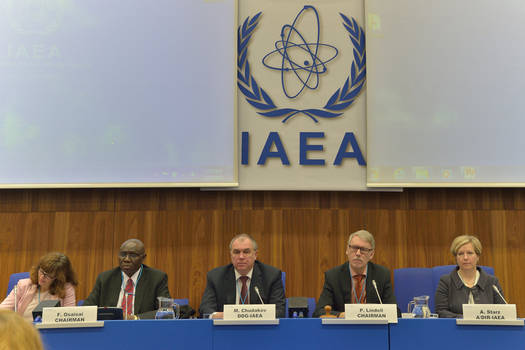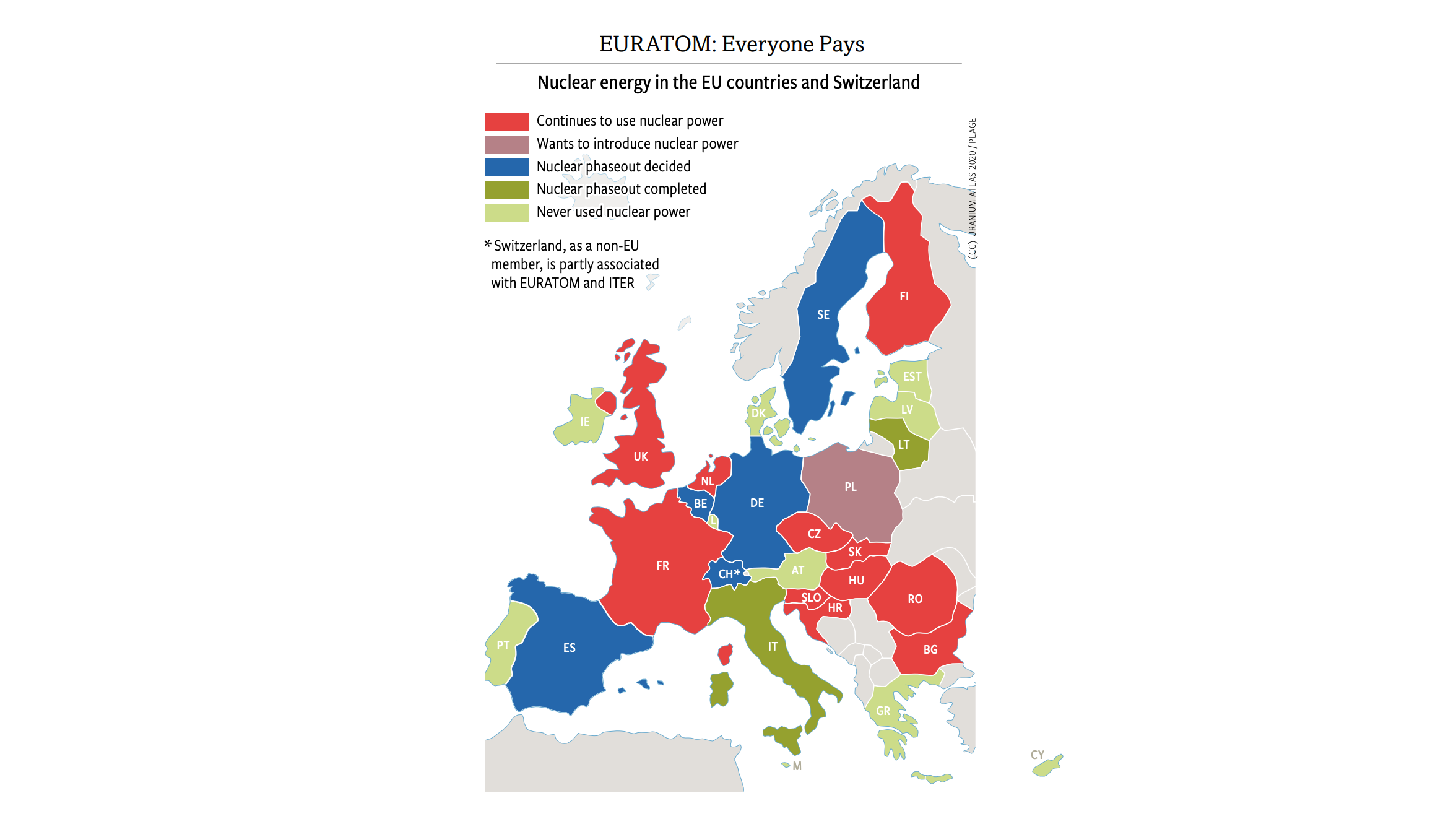
The WHO is supposed to pursue independent health policies. However, when it comes to nuclear issues, it is controlled by the IAEA. And under the EURATOM treaty, the European Union continues to promote nuclear energy.
On July 29, 1957, when the International Atomic Energy Agency (IAEA) was established under the auspices of the United Nations (UN), it seemed convenient to form an alliance with the UN World Health Organization (WHO), established nine years earlier. The experts wanted to profit from each other’s experience. The industrialized nations had decided to use nuclear fission for civil purposes, a technology promising true wonders; the new organization was slated to promote worldwide dissemination of nuclear energy. At the same time, the effects of nuclear radiation on the human body were starting to be studied following the US nuclear tests in the South Pacific. On May 28th, 1959, the two organizations concluded a cooperation agreement, referred to as WHA12-40.It states: “The International Atomic Energy Agency and the World Health Organization agree that, with a view to facilitating the effective attainment of the objectives set forth in their respective constitutional instruments, within the general framework established by the Charter of the United Nations, they will act in close co-operation with each other and will consult each other regularly in regard to matters of common interest.” It continues: “Whenever either organization proposes to initiate a program or activity on a subject in which the other organization has or may have a substantial interest, the first party shall consult the other with a view to adjusting the matter by mutual agreement.”
Until the Chernobyl, Ukraine disaster in 1986, this agreement had never received much attention. However, it wasn't until the WHO announced the official number of deaths from the nuclear accident, that the real importance of the agreement became evident. The WHO figures only acknowledged 30 dead workers and firemen who lost their lives as a direct result of the disaster. Today, in light of the many cancer deaths, it puts the death toll at 6,000. The organization International Physicians for the Prevention of Nuclear War (IPPNW, Nobel Peace Prize 1985) estimates up to 1.4 million deaths.

Then, in March of 2011, another nuclear catastrophe occurred, in Fukushima, Japan. In April of 2014, three years after the triple nuclear meltdowns there, UNSCEAR, the UN Scientific Committee on the Effects of Atomic Radiation under the auspices of the IAEA, published its first report relating to the nuclear catastrophe. The authors claimed that “no significant change in future cancer rates are to be expected which could be linked to the radiation exposure from the accident.”
Dr. Alex Rosen, a pediatrician and co-president of IPPNW Germany, criticizes this attempt to play down the consequences: “The fact that cancer doesn’t carry a label of origin, and can never be clearly linked to a specific cause, is used to deny any causality. We already know these tactics from the tobacco and the asbestos industries.”
Rosen’s view is supported by Richard Horton, the editorin-chief of the medical journal “The Lancet”; in volume 383 dated June 21, 2014 he wrote: “when it comes to Chernobyl and Fukushima and the threat of radioactive contamination, the truth may not have been fully told. And WHO has a responsibility to get to that truth, however uncomfortable it might be for member-states or related agencies.”
In the meantime, the IAEA has concluded cooperation agreements with the Japanese foreign ministry, the Fukushima Prefecture and Fukushima Medical University, which ensure that no party shall publish confidential information or classified material without the express consent of the other party
The WHO denies it is subject to censorship. There has been a statement on its website since February of 2001, proclaiming that its commitment to the IAEA: “... does not in any way imply a submission of one organization to the authority of the other so as to affect their independence and responsibilities under their respective constitutional mandates.”
However, there is no cooperation on equal terms between the WHO and the IAEA because the WHA12-40 agreement ensures an imbalance, inherent in the differing interests of the two organizations: As a UN organization, the WHO represents the health interests of the public and not the interests of an industry; the IAEA is fully backed by the nuclear industry and the nuclear weapons establishment. De facto, the IAEA is no more than a lobby organization, affiliated with the United Nations by an agreement.
As a result, when things get complicated, the WHO chooses to remain silent. For example, it never issued warnings regarding the use of uranium ammunition (see p. 40), which releases toxic and radioactive dust, endangering soldiers on both sides of a conflict as well as the civilian population. When radiologist Keith Baverstock, employed by the WHO from 1991 to 2003, wanted to publish new findings from the Armed Forces Radiobiology Research Institute – a division of the US Department of Defense – he was censored and vilified, prompting him to leave the organization. In 2007, the “Independent WHO” initiative was established in Geneva. It demands an independent health policy, especially in the field of threats.
Another document from the early days guarantees that the interests of the nuclear industry will be served: the EURATOM treaty, which established the European Atomic Energy Community on March 25th, 1957. Founding members were Belgium, Germany, France, Italy, Luxembourg and the Netherlands. This treaty was designed to disseminate and further develop nuclear energy in Europe. When the Treaty of Lisbon amended the Treaty on European Union and the Treaty establishing the European Community in 2007, the 50-yearold EURATOM treaty remained an integral part of the new alliance agreement. EURATOM provides the basis for financing European nuclear research. All member states pay into a joint fund, whether they operate nuclear power plants or not.
“The EURATOM treaty undermines free trade”, says Heinz Stockinger, founder of the Austrian anti-nuclear initiative PLAGE. “Without this excessive funding, the nuclear industry would be in no position to survive in the free market.” Currently, this is evident in the European Commission’s approval of the exorbitant subsidies for the Hinkley Point C nuclear power project in the UK, which is based on the EURATOM treaty. “The treaty is undemocratic and obsolete”, Stockinger says. “The European Parliament has no decisionmaking authority in EURATOM issues.”
In 2005, Austria, Hungary, Sweden, Germany and Ireland issued a statement regarding the EU constitution, emphasizing that the central stipulations of the EURATOM treaty have never been reformed since taking effect and need updating; for this reason they supported plans for a review conference. However, this conference is yet to materialize: the states operating nuclear power plants are determined to uphold the EURATOM privileges for the nuclear industry.
*this article is part of Uranium Atlas, you can see the entire publication here